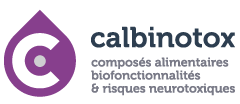

Technicien(ne)
Faculté des Sciences et Technologies - Nancy
Université de Lorraine
+33 (0)3 72 74 51 95 | emilie.lorson@univ-lorraine.fr
Microorganisms, 9 (6), pp. 1113-1113.
Uriot, O., Kebouchi, M., Lorson-Dalibard, É., Galia, W., Denis, S., Chalançon, S., Hafeez, Z., Roux, É., Genay, M., Blanquet-Diot, S., Dary-Mourot, A.
Despite promising health effects, the probiotic status of Streptococcus thermophilus, a lactic
acid bacterium widely used in dairy industry, requires further documentation of its physiological
status during human gastrointestinal passage. This study aimed to apply recombinant-based in vivo
technology (R-IVET) to identify genes triggered in a S. thermophilus LMD-9 reference strain under
simulated digestive conditions. First, the R-IVET chromosomal cassette and plasmid genomic library
were designed to positively select activated genes. Second, recombinant clones were introduced
into complementary models mimicking the human gut, the Netherlands Organization for Applied
Scientific Research (TNO) gastrointestinal model imitating the human stomach and small intestine,
the Caco-2 TC7 cell line as a model of intestinal epithelium, and anaerobic batch cultures of human
feces as a colon model. All inserts of activated clones displayed a promoter activity that differed
from one digestive condition to another. Our results also showed that S. thermophilus adapted its
metabolism to stressful conditions found in the gastric and colonic competitive environment and
modified its surface proteins during adhesion to Caco-2 TC7 cells. Activated genes were investigated
in a collection of S. thermophilus strains showing various resistance levels to gastrointestinal stresses,
a first stage in the identification of gut resistance markers and a key step in probiotic selection.
Food Microbiology, 53 (A), pp. 18-29.
Uriot, O., Galia, W., Awussi, A. A., Perrin, C., Denis, S., Chalancon, S., Lorson, É., Poirson, C., Junjua, M., Le Roux, Y., Alric, M., Dary, A., Blanquet-Diot, S., Roussel, Y.
Streptococcus thermophilus, a lactic acid bacterium used to produce yogurts and cheeses is more and more considered for its potential probiotic properties. This implies that additional information should be obtained regarding its survival and metabolic activity in the human Gastro-Intestinal Tract (GIT). In this study, we screened 30 S. thermophilus strains for urease, small heat shock protein, and amino-acid decarboxylase functions which may play a role in survival in the upper part of the GIT. The survival kinetics of 4 strains was investigated using the TIM, a physiologically relevant in vitro dynamic gastric and small intestinal model. The three strains LMD9, PB18O and EBLST20 showed significantly higher survival than CNRZ21 in all digestive compartments of the TIM, which may be related to the presence of urease and heat shock protein functions. When LMD9 bacterial cells were delivered in a fermented milk formula, a significant improvement of survival in the TIM was observed compared to non-fermented milk. With the RIVET (Recombinase In Vivo Expression Technology) method applied to the LMD9 strain, a promoter located upstream of hisS, responsible for the histidyl-transfer RNA synthesis, was found to be specifically activated in the artificial stomach. The data generated on S. thermophilus survival and its adaptation capacities to the digestive tract are essential to establish a list of biomarkers useful for the selection of probiotic strains.
Journal of Agricultural and Food Chemistry, 60 (2), pp 554-565.
Miclo, L., Roux, E., Genay, M., Brusseaux, E., Poirson, C., Jameh, N., Perrin, C., Dary, A.
Milk proteins contain numerous potential bioactive peptides, which may be released by digestive proteases or by the proteolytic system of lactic acid bacteria during food processing. The capacity of Streptococcus thermophilus to generate peptides, especially bioactive peptides, from bovine caseins was investigated. Strains expressing various levels of the Cell Envelope Proteinase, PrtS, were incubated either with αs1-, αs2- or β-casein. Analysis of the supernatants by LC-ESI-MS/MS showed that the β-casein was preferentially hydrolyzed first, followed by αs2-casein and then αs1-casein. Numbers and types of peptides released were strain-dependent. Hydrolysis appeared to be linked with the accessibility of different casein regions by protease. Analysis of bonds hydrolyzed in the region 1-23 of αs1-casein suggests that PrtS is at least in part responsible for the peptide production. Finally, among the generated peptides, 13 peptides from β-casein, 5 from αs2-casein and 2 from αs1-casein have been reported as bioactive, 15 of them being angiotensin-converting enzyme inhibitors.
Journal of Dairy Science, 94 (6), pp. 2779-2793.
Dufour, D., Germon, P., Brusseaux, E., Le Roux, Y., Dary, A.
Mastitis pathogens belonging to Escherichia coli species are often considered as environmental opportunistic pathogens that invade the udder and are rapidly killed by the immune system of cows. However, several studies have reported that some of these strains are able to persist in the udder for prolonged periods or to adhere and invade mammary epithelial cells, suggesting that they might possess some specific properties or genes that could be involved in their capacity to provoke mastitis. The aim of this work was to search for such specific genes in the E. coli strain P4, which was isolated from a case of severe mastitis and is often used to induce experimental mastitis. We established that this strain belongs to phylogenetic group A of the E. coli species, and that its core genome is very similar to that of the commensal nonpathogenic strain E. coli K-12 MG1655. Seventeen transfer RNA loci, known to be frequently associated with genomic islands, were screened and an altered structure was detected for 7 of them. The partial characterization of 5 of these loci (asnT, leuX, pheV, serU, and thrW) and the complete characterization of 1 (argW) revealed the presence of genomic islands that differ from those already described in pathogenic or nonpathogenic E. coli strains.
Molecular typing of industrial strains of Pseudomonas spp. isolated from milk and genetical and biochemical characterization of an extracellular protease produced by one of them
International Journal of Food Microbiology, 125 (2), pp. 188-196.
Dufour, D., Nicodème, M., Perrin, C., Driou, A., Brusseaux, E., Humbert, G., Gaillard, J.-L., Dary, A.
21ème Colloque du Club des Bactéries Lactiques, 14-15 juin, Lille, France
Kebouchi, M., Genay, M., Uriot, O., Blanquet-Diot, S.-T., Lorson-Dalibard, É., Soligot-Hognon, C., Le Roux, Y., Dary, A.
Streptococcus thermophilus est largement utilisée dans l’industrie laitière pour fabriquer des yaourts et des fromages. Afin de définir son potentiel probiotique, nous avons (i) déterminé la capacité de S. thermophilus LMD-9 à adhérer à des lignées cellulaires (HT29-MTX, HT29-CL.16E et Caco-2) exprimant différentes mucines, (ii) identifié des gènes spécifiquement induits durant l’adhésion aux cellules Caco-2 en utilisant l’approche R-IVET (Recombinase-based In Vivo Expression Technology).
Nous avons montré que la capacité d’adhésion de LMD-9 variait suivant la lignée cellulaire utilisée. Elle adhérait plus aux cellules HT29-CL.16E qui sécrètent majoritairement la mucine intestinale MUC2, suggérant qu’elle pourrait coloniser les intestins in vivo et exercer des effets bénéfiques. Le rôle dans l’adhésion des gènes ctsR, srtA, prtS et mucBP, dont deux codent des protéines de surface pariétales (prtS, mucBP), a également été étudié. Le profil d’adhésion des mutants était différent selon les lignées cellulaires, montrant que l’implication des protéines CtsR, SrtA, PrtS et MucBP dans l’adhésion dépendrait des propriétés des cellules eucaryotes (mucus, type de mucine…).
L’analyse transcriptomique a révélé que le processus d’adhésion ne dépendait pas uniquement des protéines de surface mais d’autres voies métaboliques joueraient un rôle important. Nous avons identifié 31 gènes spécifiquement induits lors de l’adhésion : 4 codant des protéines de surface, 8 des transporteurs de nutriments, 3 des protéines de réponse au stress, 2 des protéines de compétence, 1 régulateur, 5 protéines hypothétiques et 9 autres.
Le processus d’adhésion est donc un processus complexe qui dépend à la fois des propriétés de surface bactériennes et eucaryotes.
Streptococcus thermophilus is widely used in the dairy industry to make yogurts and cheeses. In order to define its probiotic potential, we have (i) determined the ability of S. thermophilus LMD-9 to adhere to cell lines (HT29-MTX, HT29-CL.16E and Caco-2) expressing different mucins, (ii) identified genes specifically induced during adhesion to Caco-2 cells using the R-IVET approach (Recombinase-based In Vivo Expression Technology).
We have shown that the adhesion capacity of LMD-9 varies according to the cell line used. It adhered more to the HT29-CL.16E cells, which mainly secrete intestinal mucin MUC2, suggesting that it could colonize the intestines in vivo and have beneficial effects. The role in adhesion of ctsR, srtA, prtS and mucBP genes, two of which encode parietal surface proteins (prtS, mucBP), was also studied. The adhesion pattern of the mutants was different according to the cell lines, showing that the involvement of the proteins CtsR, SrtA, PrtS and MucBP in the adhesion would depend on the properties of the eukaryotic cells (mucus, mucin type ...).
Transcriptomic analysis revealed that the adhesion process did not depend solely on surface proteins, but other metabolic pathways would play an important role. We identified 31 genes specifically induced during adhesion: 4 encoding surface proteins, 8 nutrient transporters, 3 stress response proteins, 2 competency proteins, 1 regulator, 5 hypothetical proteins and 9 others.
The adhesion process is therefore a complex process that depends on both bacterial and eukaryotic surface properties.
17e Colloque du Club des Bactéries Lactiques (CBL), 27-29 octobre, Nancy, France
Roux, E., Miclo, L., Brusseaux, E., Poirson, C., Perrin, C., Dary, A.
Rapport de contrat avec le Centre Interprofessionnel de l’Économie Laitière (CNIEL), 55 p.
Miclo, L., Brusseaux, E., Poirson, C., Perrin, C., Dary, A.